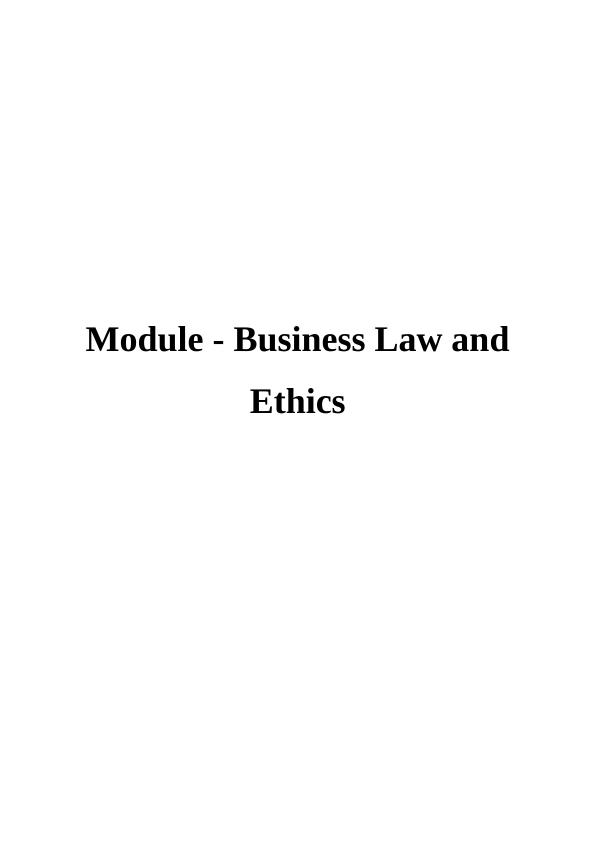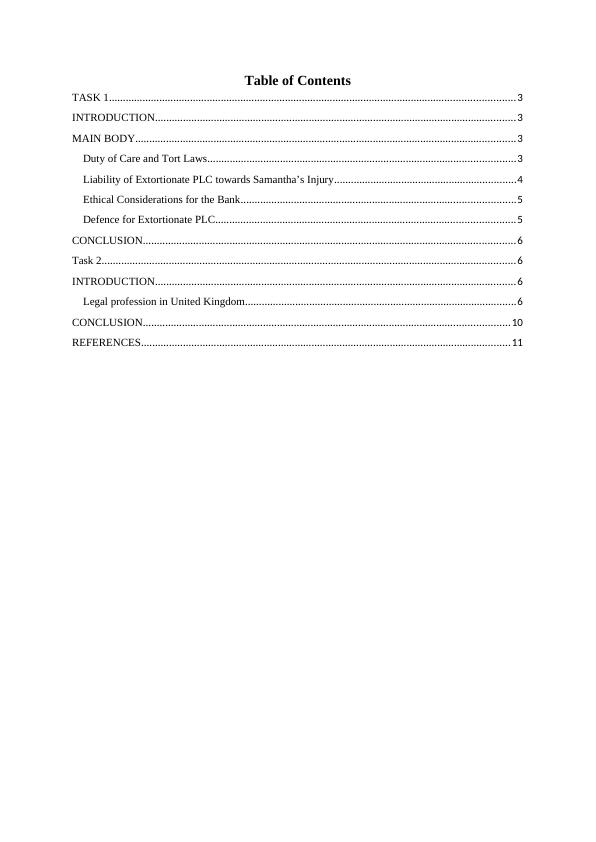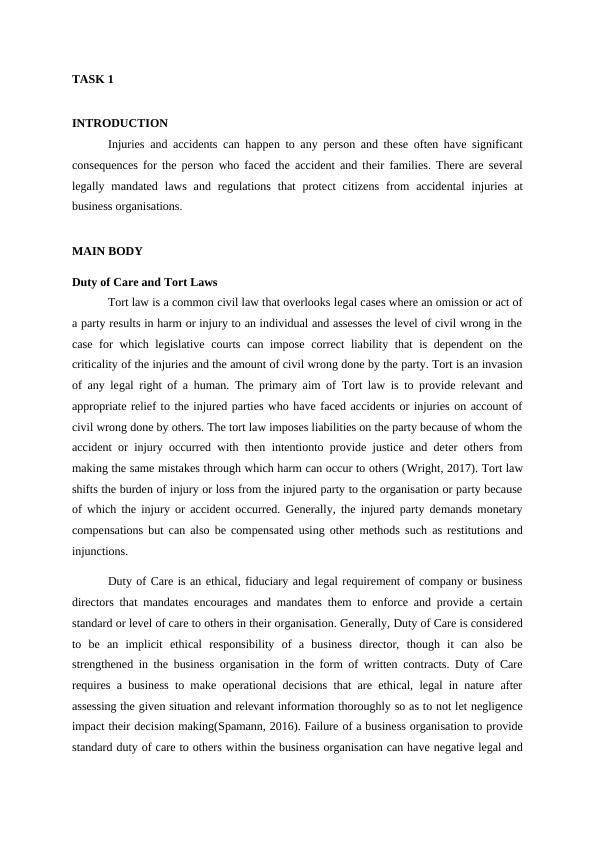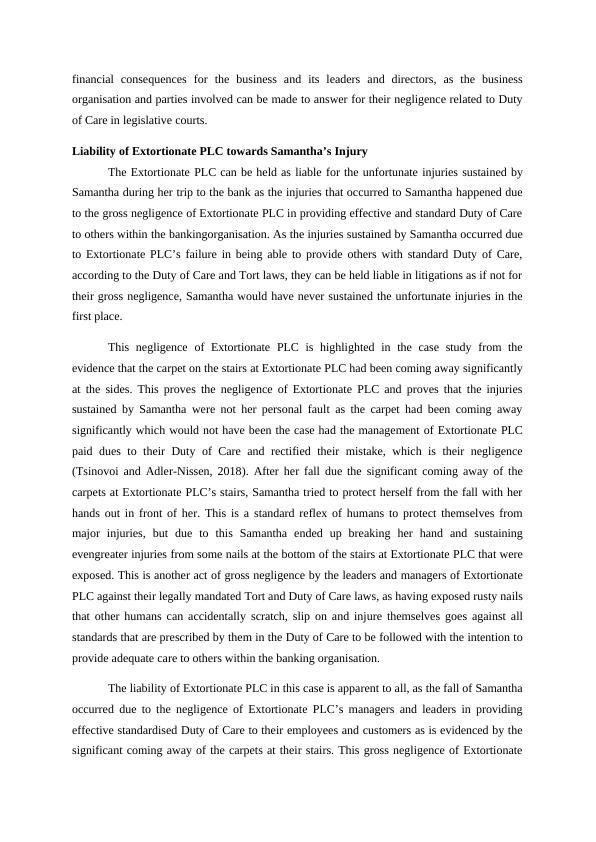Duty of Care and Tort Laws
Critique an article and write an individual essay, as well as prepare an individual report on Business Law and Ethics.
11 Pages3789 Words57 Views
Added on 2023-01-11
About This Document
This report evaluates the concepts of Duty of Care and Tort and assesses using doctrine of Tort if Extortionate PLC can be held liable for Samantha’s injury. The report also analyses the ethical requirements of the bank and any possible defense that Extortionate PLC might be able to use in litigation.
Duty of Care and Tort Laws
Critique an article and write an individual essay, as well as prepare an individual report on Business Law and Ethics.
Added on 2023-01-11
ShareRelated Documents
End of preview
Want to access all the pages? Upload your documents or become a member.
Liability of Extortionate PLC for Injuries Sustained by Samantha
|7
|1871
|1
Tort of Negligence: Explaining Meaning, Duty of Care, and Extortionate Plc's Liability
|7
|1854
|84
Tort Law and Duty of Care: Liability of Extortionate Plc for Injury of Samantha
|7
|1830
|39
Tort and Duty of Care in Business Law
|7
|1916
|94
Business Ethics and Law
|7
|1921
|54
Tort and the Duty of Care in Business Law
|7
|2015
|95




